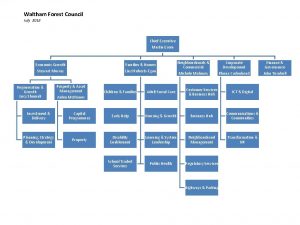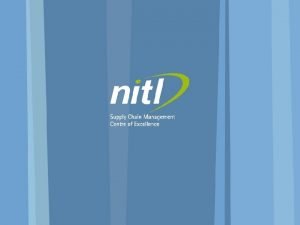CSE Senior Design I Risk Management Instructor Mike


















- Slides: 18

CSE Senior Design I Risk Management Instructor: Mike O’Dell This presentations was derived from the textbook used for this class: Mc. Connell, Steve, Rapid Development, Chapter 5.

1 Systems Design Project Are Risky Ø The odds of a large project being cancelled due to risks encountered: 50% Ø The odds of a large project finishing on time are close to zero! Ø Pete Marwick (1988): 35% of companies studied had at least one “runaway project” project § Allstate office automation ü 5 year/$8 M … 6+ years/$100 M § Westpac Banking Corporation info systems ü 5 year/$85 M… 3 years/$150 M later: cancelled 2

1 Why Do Projects Fail? Ø Generally, from poor risk management § Failure to identify risks § Failure to actively/aggressively plan for, attack and eliminate “project killing” risks Ø Risk comes in different shapes and sizes § Schedule risks (short to long) § Cost risks (small to large) § Technology risks (probable to impossible) 3

1 Case Study 5 -1: What can go wrong? Ø What type of project is this? Ø How difficult does it appear to be, on the surface? Ø What classic mistakes do you see along the way? Ø Where/when/how could the risks have been better managed? 4

1 Elements of Risk Management Ø Managing risk consists of: identifying, addressing and eliminating risks Ø When does this occur? ü (WORST) Crisis management/Fire fighting : addressing risk after they present a big problem ü (BAD) Fix on failure : finding and addressing as the occur. ü (OKAY) Risk Mitigation : plan ahead and allocate resources to address risk that occur, but don’t try to eliminate them before they occur ü (GOOD) Prevention : part of the plan to identify and prevent risks before they become problems ü (BEST) Eliminate Root Causes : part of the plan to identify and eliminate the factors that make specific risks possible 5

1 Elements of Risk Management Ø Effective Risk Management is made up of: § Risk Assessment: identify, analyze, prioritize § Risk Control: planning, resolution, monitoring IDENTIFICATION RISK ASSESSMENT RISK MANAGEMENT ANALYSIS PRIORITIZATION PLANNING RISK CONTROL RESOLUION MONITORING 6

1 Risk Assessment Tasks Ø Identification: Identification produces a list of risks that have potential to disrupt your project’s schedule Ø Analysis: Analysis assesses the likelihood and impact of each identified risk, and the risk levels of possible alternatives Ø Prioritization: Prioritization prioritizes the list by impact § serves as the basis for risk control tasks 7

1 Risk Control Tasks Ø Planning: Planning produces your plan for dealing with each risk § Must ensure consistency of the risk management plan with your overall project plan Ø Resolution: Resolution executing your plan to deal with the risks Ø Monitoring: Monitoring staying on top of your plan and re-evaluate for new risks 8

1 Risk Identification CLASSIC MISTAKES Ø Most common schedule risks 1. 2. 3. 4. 5. 6. 7. 8. 9. 10. Feature creep Gold-plating (requirements/developer) Shortchanged QA Overly optimistic schedules Inadequate design Silver-bullet syndrome Research-oriented development Weak, poorly-trained personnel Contractor failure Friction between developers & customers 9

1 Risk Identification Ø Use Table 5 -3: Potential Schedule Risks § § § Schedule Creation Organization and Management Development Environment End-users Customer Contractors Requirements Product External Environment Personnel Design and Implementation Process 10

1 Risk Analysis: Exposure Table § Analyze the (schedule) impact of each risk § Create a risk exposure/impact table for each risk. ü Risk Exposure = Probability of Loss X Size of Loss Probability of Loss Size of Loss Risk Exposure Overly optimistic schedule. 50% 5 wks 2. 5 wks Addition of new feature that adds capability to … 10% 20 wks 2. 0 wks Inadequate design that requires redesign of major … 15% 15 wks 2. 25 wks Board contractor delays delivery of board. 10% 4 wks 0. 4 wks Unstable code base from earlier release of product. 20% 10 wks 2. 0 wks Product requirements take longer than expected to finalize than planned. 30% 3 wks 0. 9 wks X wks Y wks Risk Etc. TOTAL PROJECT OVERRUN 11

1 Risk Analysis Ø Estimating Size of Loss § Impact to schedule IF risk is encountered in its expected form § Can be precise based on known date for re-review(s), etc. § May need to break down tasks to lowest known level Ø Estimating Probability of Loss § Subjective assessment of probability that a given risk will cause the stated impact § Many different practices can be used: ü Experience ü Delphi or group consensus ü Betting analogies (How much would you bet that…? ) ü Adjective calibration (“Good probability” = x%, “Fair” = y%, …) 12

1 Risk Prioritization Ø Establishes a focus on your risks based on the expected impact (risk exposure) of each risk § Greatest potential impact must also be addressed Ø 80/20 Rule Probability of Loss Size of Loss Risk Exposure Overly optimistic schedule. 50% 5 wks 2. 5 wks Inadequate design that requires redesign of major … 15% 15 wks 2. 25 wks Addition of new feature that adds capability to … 10% 20 wks 2. 0 wks Unstable code base from earlier release of product. 20% 10 wks 2. 0 wks Product requirements take longer than expected to finalize than planned. 30% 3 wks 0. 9 wks Board contractor delays delivery of board. 10% 4 wks 0. 4 wks X wks Y wks 1. 3+ 5. 65 wks Risk Etc. TOTAL PROJECT OVERRUN 13

1 Risk-Management Planning Ø Develop a specific, detailed plan for resolution of each high-priority risk identified § § § What must be done When it must be done How it will be done Who will do it When/how it will be monitored/reassessed 14

1 Risk Resolution Ø Risks can be resolved by: § Avoidance: Avoidance don’t do the risky activity § Transference: Transference move it to another place (team, organization, contractor, etc. ) where it’s not as likely § Buying information: information early prototyping, consulting, … § Root cause elimination: elimination get at what causes the risk, and make it go away § Acceptance/assumption: Acceptance/assumption don’t worry about it, but plan to accept the consequences § Publicizing: Publicizing let stakeholders know (so they implicitly accept the risk), avoid surprises § Controlling: Controlling develop contingency plans, allocate additional resources if that will help, … § Recording/remembering: write down what you know so you can use it in the future (e. g. , next project, later in this one) 15

1 Risk Resolution Ø Use Table 5 -6: Means of Controlling the Most Common Schedule Risks § Find ways to apply these common approaches to the specific risks that you have identified. § Make them specific and relevant to your project. 16

1 Risk Monitoring Ø Risks and potential impact will change throughout the course of a project Ø Keep an evolving “TOP 10 RISKS” list § See Table 5 -7 for an example § Review the list frequently § Refine… Ø Put someone in charge of monitoring risks Ø Make it a part of your process & project plan 17

1 Case Study 5 -2: Risk Management Done Right Ø Why/how did this project start off on the right foot? Ø Describe the risk management plan: § How were the top risks identified? üWhat were they? § How were these risks addressed? § How were risks monitored? Ø What was the end result? 18
 Market risk credit risk operational risk
Market risk credit risk operational risk Cse senior
Cse senior Key risk indicators template
Key risk indicators template Risk map risk management
Risk map risk management Senior design ucf
Senior design ucf Ece senior design gatech
Ece senior design gatech Ncsu csc senior design
Ncsu csc senior design Ee senior design project ideas
Ee senior design project ideas Waltham forest senior management structure
Waltham forest senior management structure Senior management function
Senior management function Ethekwini municipality senior management structure
Ethekwini municipality senior management structure Tipos de participantes en un grupo
Tipos de participantes en un grupo Tcole instructor course
Tcole instructor course Basic instructor course texas
Basic instructor course texas Basic instructor course #1014
Basic instructor course #1014 Pepperball launcher nomenclature
Pepperball launcher nomenclature Everyone selected to serve on this jury
Everyone selected to serve on this jury Instructor vs teacher
Instructor vs teacher Cisco certified instructor
Cisco certified instructor


































